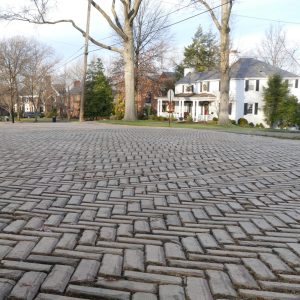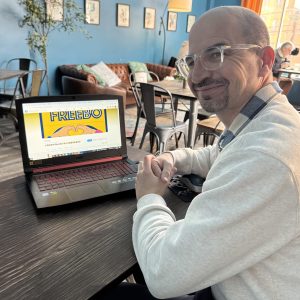Mt. Lebanon to Morocco: learning about an unfamiliar land
Lots of people have a Covid trip. It’s that vacation that you planned for 2020 that was cancelled because of, well, you know… Mine was to Morocco. At the time, my son lived in Spain, and Morocco, just south of Spain across the Strait of Gibraltar, was convenient. But instead of traveling, we masked up and isolated. A year later, my son moved back to the States, but I never forgot about that trip, always lurking in the back of my mind, waiting. Three years later, we finally decided to do it!
Our visit to Morocco wasn’t your typical relaxing vacation; it was more like an adventurous field trip. It immersed me in unfamiliar history, culture and traditions that I never learned about in school. When people asked me “How was your trip?” I’d answer, “It was amazing and different,” unable to do justice to the real answer in a short conversation. But here I will try.
Moroccan traditions and Islamic influences are present wherever you look. Women’s attire is conservative, consisting of long dresses, long sleeves and hijab. Many of the female tourists and transplants respect the culture and wear pants or skirts that fall below the knee.

The prayers are amplified on loudspeakers as a call to prayer for everyone in earshot. On our first day, I was surprised when it woke me at 4 a.m. and lasted about 10 minutes (believe me, I timed it.) Only Muslims going to pray are allowed in the mosques, but I caught a glimpse of the crowds of men bent over prayer rugs. People also commonly pray in public places.

The Muslims are relatively “new” to Morocco, as they arrived 1000 years ago. Prior to that, the native Amazigh and Jewish people lived peacefully together in the cities for centuries.

The original occupants are sometimes referred to as “Berbers” (like the rugs they skillfully craft,) but our Amazigh guide told us it was a European word given to the natives, that translates to barbarian, which is considered a racist term today.

Although many Moroccans understand English, Arabic and French are Morocco’s native languages. We don’t speak either and managed okay.

Tradition is incorporated in all facets of life. In the Medina, the walled part of the ‘old city,’ internal structures were built with traditional, insulating materials, like clay and straw. The Medinas are 1000 years old, functional and well-preserved. However, the outer walls are in constant need of repair, so new construction uses cement, which is cheaper and more durable, but lacks the natural climate control that’s needed to keep residents cool in the treacherous summer heat. The Medina is colorful and alive, bustling with merchants, locals, tourists, mopeds, delivery carts, and cats. The air is thick with gloriously exotic and pungent aromas. You feel like a mouse in an endless maze as you navigate the narrow streets and even smaller walkways and offshoots.



Storefronts, no larger than a walk-in closet, overflow into the streets with traditional crafts, rugs, pillows, clothing, leather goods, dishes, tea sets, mosaic lamps, jewelry, small livestock, spices and food.


Marrakech is home to one of the largest outdoor marketplaces. Vendors are open all day, but at night when the temperature becomes more comfortable, the place is transformed with even more food options, street performers and musicians, creating a carnival-like atmosphere.


Sidewalk cafes are a vital staple in the Medina, where patrons sip tea and fresh juice all day. The tea, fondly referred to as Moroccan whiskey, is a sweet blend with mint, poured from ornate teapots into small glasses with no handle. Tea is a foundation of the daily routine. If you are offered tea, you don’t refuse. Servers pour it from high above, so the long stream blends perfectly by the time it hits the glass. It’s quite an act of showmanship, skill and hospitality.



We stayed in Riads to get the most authentic Moroccan experience. Riads, a type of historic Moroccan home, are built around an interior courtyard or garden and traditionally housed multi-generational families. They have two stories, usually more, with open balconies that provide fresh air and light. The rooms have no exterior windows, to keep out the noise, heat and dust of the city. Like other Moroccan architecture, the Riads are designed specifically to keep out heat and protect inhabitants from the sun. The interior is spectacularly detailed with colorful mosaics, intricate wood carvings and plasterwork.





Since Riads were once houses, they are small with 10 rooms or less and run by hospitable owners. Upon arrival, we were greeted with tea and cookies. Each morning, we enjoyed a home cooked breakfast. The hosts are a valuable source of information with advice about where to visit and where to avoid, sometimes act as a guide, and will go out of their way to get you anything you need.
Rooftop living areas are common—decorated with colorful cushions, rugs and curtains—and are quite pleasant once the sun goes down, offering spectacular views of the city.



The sun is brutal, so every part of daily life is designed to avoid it. Afternoon siestas are common to evade the heat. Air conditioning is rare. Our individual sleeping quarters did have it, but the rest of the rooms in the Riad did not. You take every opportunity to use the shade, and if you can catch a breeze, the temperature becomes tolerable. Coastal cities, like Tangier and Casablanca, are cooler and more humid than the inland cities, like Marrakesh and Fez, which are hot and dry.
Since we were in the Sahara Desert, we couldn’t pass up the opportunity to go on a camel excursion. (Fun fact, in Morocco, the animals with only one hump are called dromedaries.) Conditions during daytime are too harsh, so our excursion left at 6:30 p.m., as sunset began.
We wore traditional headdresses for protection from the sun and wind and backpacks with our overnight belongings. The ride lasted 45 minutes, with a sandboarding stop and to watch the sunset over the dunes. Thankfully, dromedaries are harnessed with blankets and a metal handlebar for holding on tight.




The animals sit when you mount them, but when they stand up, hold on! Their back legs rise first, so riders are jolted forward. You need to lean backwards and have a death grip on the handle to not fall off. Once they’re on all fours, you’re very high up! They are sweet, gentle and well-behaved, led by experienced guides. It’s a bumpy ride, especially on steep dunes, and I found that 45 minutes is quite long enough to be riding a dromedary. It’s not as easy as it looks in the movies!

Our overnight excursion included dinner, campfire and live music, before we headed off to our sleeping accommodations, which were raised cots in framed tents. The desert cools down to a comfortable temperature at night, but the tents still retained heat, so many of us dragged our blankets outside and slept under the stars. In the morning, we were up in time to watch the sunrise in the Sahara, then rode our one-humped friends back to civilization.
When you read about visiting Morocco as a tourist, one piece of advice is consistent. Bring toilet paper! This is good advice. Everywhere we stayed had toilet paper, but most public restrooms, including places like the airport, probably will not. Another custom that makes Americans wince: you don’t flush the toilet paper. The plumbing system is not designed to handle it. There are waste baskets next to the toilet to deposit whatever you use, and yes, it’s cringy in the beginning. But just like anything else, you get used to it, and when I arrived home, I instinctively hesitated before flushing the first time.
All in all, I’m grateful for the American plumbing system. But truly, this was an amazing way to get out of my comfort zone and visit somewhere so different from what I’m used to. I will fondly cherish the Moroccan traditions of hospitality, tea, prayer and architecture. Although I couldn’t buy every souvenir I wanted, the memories will last a lifetime!











